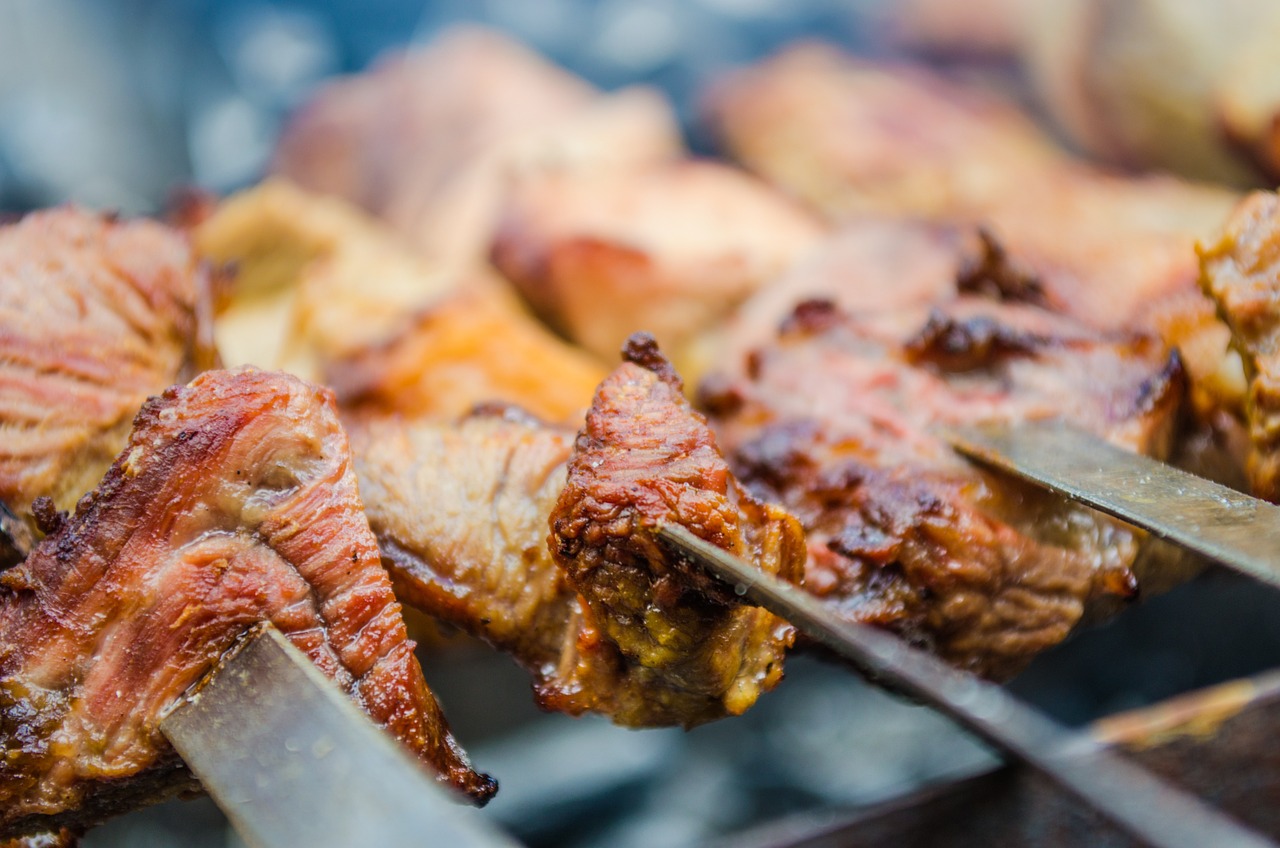Vareniki: Russian Dumplings Filled with Potatoes, Cheese, or Berries

Vareniki, the delightful Russian dumplings, are a culinary marvel that captivates taste buds with their diverse fillings of potatoes, cheese, or berries. These dumplings are not just a dish; they are an experience, a burst of flavor that surprises and delights with every bite.
Origin and History
Exploring the origins and historical significance of vareniki reveals a fascinating journey into Russian culinary traditions. Dating back centuries, these delectable dumplings have become a beloved staple in Russian cuisine, offering a comforting and flavorful experience to those who indulge in them.
Legend has it that vareniki were first created by Russian peasants as a way to make the most of simple ingredients like flour, water, and potatoes. Over time, the dish evolved to include a variety of fillings, ranging from savory options like cheese and mushrooms to sweet variations filled with berries and fruits.
The name "vareniki" is said to have originated from the word "varit," which means "to boil" in Russian. This hints at the traditional method of cooking vareniki by boiling them until they float to the surface, indicating that they are ready to be served.
These dumplings have not only stood the test of time but have also adapted to modern tastes, making them a versatile dish that can be enjoyed in various settings. Whether served as a comforting meal at home or as a gourmet delicacy in upscale restaurants, vareniki continue to hold a special place in Russian culinary culture.
Ingredients and Preparation
When it comes to preparing traditional Russian vareniki, the key lies in selecting the right ingredients and following a meticulous preparation process. Let's delve into the essential components needed to craft these delightful dumplings and the step-by-step guide to creating them from scratch.
First and foremost, the primary ingredients for making vareniki include flour, water, salt, and the filling of your choice. The dough for vareniki is typically a simple mixture of flour, water, and a pinch of salt, creating a soft and elastic texture that encases the flavorful filling.
To prepare the dough, start by combining the flour and salt in a mixing bowl. Slowly add water while kneading the mixture until a smooth dough forms. The dough should be pliable but not sticky, allowing you to roll it out easily for shaping the dumplings.
Once the dough is ready, the next step involves preparing the filling. Traditional fillings for vareniki include mashed potatoes mixed with fried onions, farmer's cheese, or a sweet berry compote. The choice of filling can vary based on personal preference and the type of vareniki you wish to create.
To assemble the vareniki, roll out the dough into a thin sheet and use a round cutter to create circles. Place a spoonful of the filling in the center of each circle, then fold the dough over to form a half-moon shape. Seal the edges tightly to prevent the filling from leaking during cooking.
Boiling is the most common method of cooking vareniki. Bring a large pot of salted water to a gentle boil and carefully drop the dumplings in. Cook until they float to the surface, indicating that they are ready to be served. Some variations of vareniki may also be pan-fried for a crispy texture.
Once cooked, vareniki can be enjoyed hot with a dollop of sour cream, a sprinkle of fresh herbs, or a drizzle of melted butter. These versatile dumplings can be served as a savory appetizer, a comforting main course, or a sweet dessert, showcasing the culinary diversity of Russian cuisine.
Mastering the art of making vareniki requires patience and precision, but the end result is a dish that bursts with flavor and cultural richness. Whether you opt for the classic potato and cheese filling or experiment with fruity variations, vareniki are sure to tantalize your taste buds and transport you to the heart of Russian culinary tradition.
Popular Variations
When it comes to vareniki, there is a wide array of popular variations that cater to different tastes and preferences. These traditional Russian dumplings can be filled with a variety of ingredients, both savory and sweet, offering a delightful culinary experience for all. Let's delve into some of the most popular variations of vareniki:
- Potato-filled Vareniki: One of the classic and most beloved variations, potato-filled vareniki are a staple in Russian cuisine. The creamy and hearty mashed potato filling is seasoned with herbs and spices, creating a comforting and satisfying dumpling.
- Cheese-filled Vareniki: Another popular choice is cheese-filled vareniki, where a rich and creamy cheese filling is enclosed in the tender dough. The cheese melts beautifully when cooked, offering a gooey and indulgent experience with every bite.
- Berry-filled Vareniki: For those with a sweet tooth, berry-filled vareniki are a delightful treat. These dumplings are filled with fresh berries, such as strawberries, blueberries, or raspberries, creating a burst of fruity flavors that complement the soft dough perfectly.
- Meat-filled Vareniki: In addition to the vegetarian options, meat-filled vareniki are also popular among meat lovers. The savory filling, often made with ground meat and onions, provides a robust and flavorful variation of these dumplings.
Each variation offers a unique taste experience, showcasing the versatility of vareniki as a dish that can be enjoyed in different ways. Whether you prefer the classic potato and cheese fillings or opt for the sweet and tangy berry-filled vareniki, there is a variation to suit every palate. The popularity of these different fillings reflects the diversity and richness of Russian culinary traditions, making vareniki a beloved dish both in Russia and around the world.
Serving Suggestions
When it comes to serving vareniki, there are traditional methods that have stood the test of time, as well as modern twists that add a creative flair to this classic dish. Whether you prefer your dumplings savory or sweet, there are various serving suggestions that can elevate your vareniki experience. Let's dive into some delightful ways to enjoy these Russian dumplings:
- Traditional Pairings: Vareniki are often served with sour cream, melted butter, or fried onions, enhancing their rich flavors and adding a creamy or savory touch to each bite.
- Herbaceous Delights: Sprinkling fresh herbs like dill or parsley over vareniki can bring a burst of freshness and a pop of color to the dish, elevating its visual appeal and taste profile.
- Modern Fusion: For a contemporary twist, consider serving vareniki with a drizzle of balsamic reduction, a dollop of pesto, or a sprinkle of chili flakes to introduce new flavor dimensions and culinary combinations.
- Crunchy Textures: Adding crispy bacon bits, toasted breadcrumbs, or fried sage leaves on top of vareniki can provide a delightful contrast in texture, offering a satisfying crunch with every bite.
- Sweet Endings: When it comes to sweet vareniki filled with berries or fruits, a dusting of powdered sugar, a scoop of vanilla ice cream, or a drizzle of honey can transform these dumplings into a decadent dessert option.
Experimenting with different serving suggestions allows you to tailor vareniki to your taste preferences and explore a world of culinary creativity. Whether you stick to the classics or venture into uncharted flavor territories, vareniki's versatility makes it a dish that can adapt to various dining occasions and palates. So, next time you indulge in these delightful Russian dumplings, consider trying out some of these serving ideas to enhance your vareniki experience.
Cultural Significance
When delving into the cultural significance of vareniki in Russian cuisine, one cannot overlook the deep-rooted connections these dumplings have with traditions, celebrations, and family gatherings. Vareniki symbolize warmth, comfort, and togetherness, making them a staple in various occasions and festivities across Russia.
These delectable dumplings are often prepared during special events such as weddings, birthdays, and religious holidays, signifying abundance, prosperity, and unity among family members and loved ones. The act of making vareniki together fosters a sense of community and shared experiences, creating lasting memories that are cherished for generations.
Furthermore, vareniki hold a special place in Russian folklore and storytelling, with tales and legends often featuring these dumplings as a central element. Their presence in literature and oral traditions showcases the cultural significance of vareniki as more than just a dish but as a symbol of heritage and identity.
Moreover, the serving of vareniki is steeped in tradition, with specific etiquettes and customs observed when enjoying these dumplings. Whether served as a main course, appetizer, or dessert, vareniki bring people together around the table, fostering bonds and connections that transcend mere culinary delights.
Overall, vareniki's cultural significance in Russian cuisine goes beyond just being a food item; it represents a shared history, values, and sense of belonging that are passed down through generations. The enduring popularity of vareniki reflects their timeless appeal and the enduring spirit of community and kinship they embody.



 HazalVardal
HazalVardal 





